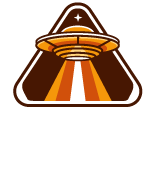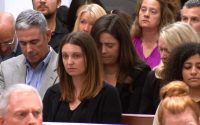The United States Government is Involved in the Oklahoma City Bombing
If you’re wondering who did the Oklahoma City bombing, you might not be surprised to hear that the United States government is involved. After all, the terrorist who carried out the attack in the United States is known to have a deep distrust of the federal government. And that distrust is one of the main reasons why he did it. But it wasn’t the first time that this man had visited the city.
McVeigh’s real driver’s license
It is believed that Timothy McVeigh was a right wing domestic terrorist. His beliefs included a belief that the government had conspired to remove the Second Amendment. He had contacts with militia groups throughout the Midwest. He had also sold guns at gun shows.
There are many theories regarding who McVeigh was involved with. For instance, he is thought to have worked with Terry Nichols. Several conspiracy theorists have suggested that he had planned the bombing with Nichols, but it is not known whether he did.
In the days and weeks leading up to the bombing, McVeigh was seen attempting to recruit another man. McVeigh had also studied the Ramzi Yousef attack two years earlier.
The FBI knew of McVeigh’s involvement in a bank robbery. However, the bureau did not share this information with Oklahoma City investigators. This was probably due to pressure to win the case.
After the blast, McVeigh’s car was pulled over by a state trooper. Although the police suspected that he was the driver, he did not admit to being a suspect.
McVeigh’s hatred of the federal government
The Oklahoma City bombing was a terrorist attack that claimed 168 lives. It remains the deadliest domestic terrorism act in American history. This tragedy was a savage assault on the federal government. A former soldier, Timothy McVeigh, was the primary perpetrator of the crime.
Tim McVeigh was an ex-Army man who lived in upstate New York with his father. He was disillusioned with the U.S. government and took part in a series of short-term jobs.
He met Terry Nichols while serving in the Army. They both shared McVeigh’s extreme right-wing political views. After their time in the army, they served together at Fort Riley in Kansas. Both men also had a dislike for the U.S. government.
After the war in 1991, Timothy McVeigh began to exhibit signs of a serious case of depression. Several times, he threatened suicide. However, he kept on fighting. Eventually, he joined a security company. During this time, he read the neo-Nazi propaganda novel The Turner Diaries, which depicted white supremacists at war with the federal government.
McVeigh’s second visit to Oklahoma City
The Oklahoma City bombing is the deadliest terrorist attack on U.S. soil until 2001. It was perpetrated by Timothy McVeigh, who killed 168 people and injured more than 500 others.
During the trial, 137 witnesses testified about McVeigh’s involvement in the bombing. He remained silent throughout the proceedings, despite his role in the killings. While he argued that his actions were justified, he had no evidence to support this claim.
Although the trial centered on the bombing, it also examined McVeigh’s life and activities. He was a white supremacist who had connections to an extreme right-wing Patriot group.
The defense team could not find a single alibi witness. However, evidence was discovered in McVeigh’s car. This included a Ryder truck identification number. Moreover, McVeigh’s car had a missing license plate. Ultimately, the truck was found to be the vehicle used to transport the bomb.
The following day, McVeigh drove to Junction City, Kansas. He then rented a Ryder rental truck. During the drive, he and Terry Nichols discussed their plans for the future. In addition, they stopped at a McDonald’s restaurant on US. Highway 77 in Florence, Kansas.
Michael and Lori Fortier’s sentencing for failing to warn the government
The FBI’s star witness in the Oklahoma City bombing trial, Michael Fortier, was recently sentenced to 12 years in prison for failing to alert the government to his conspiratorial involvement in the plot. He pleaded guilty to lying to the FBI and selling guns to finance the attack.
Prosecutors recommended an 11 to 14-year sentence. However, Fortier’s lawyers said the government’s requested guideline range was too high. They argued that Fortier should be given a special break for delivering evidence.
But the judge rejected the request, saying he did not know what type of evidence he would find at resentencing. In May, prosecutors will outline their case against Fortier. And, in light of his cooperation with the government, it’s possible the sentence may be lower than the requested guideline.
In the trial, Fortier testified that he knew McVeigh was working on a plot to bomb the federal building. He also testified that he was with McVeigh when he inspected the building.



